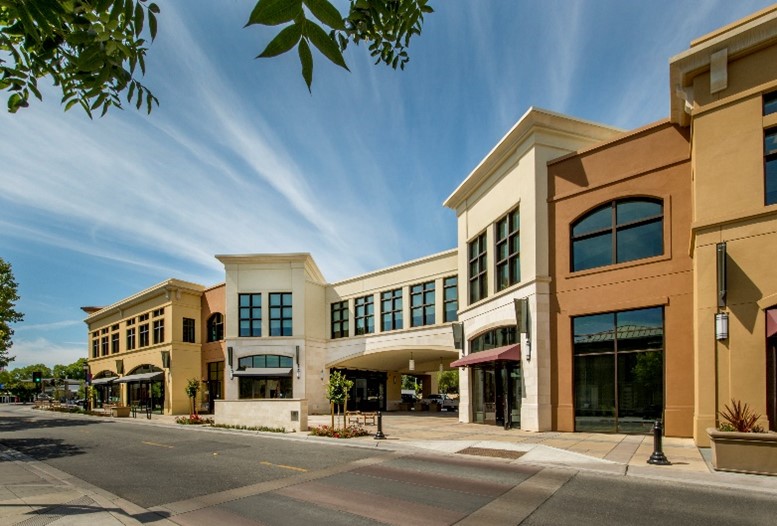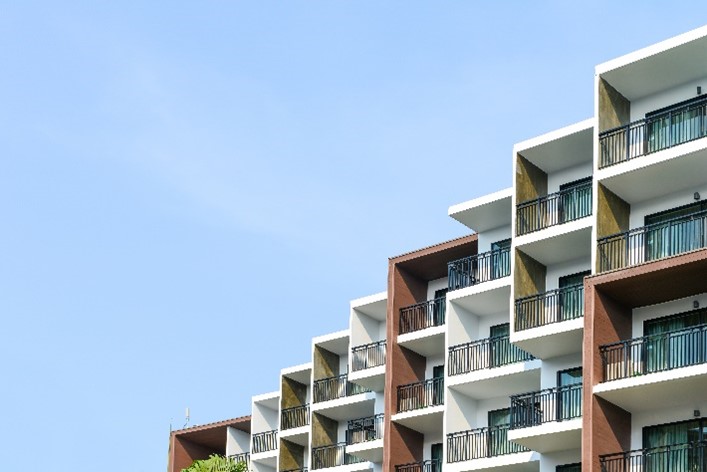The Federal Reserve raises interest rates to a 22-year high, signaling potential implications for multifamily investors. Despite a global slowdown in commercial real estate, the U.S. CRE market remains resilient and dominant. Current challenges in the multifamily sector include declining investment sales and maturing floating-rate loans, but there is still optimism as investors shift focus to stable markets and quality acquisition opportunities. Amidst contrasting views on the commercial real estate market, investors can find opportunities, however those opportunities are few and far between for the time being.
Federal Reserve Raises Interest Rates to 22-Year High
Fed Funds Rate Rises by 25 Basis Points
Federal Reserve Chairman Jerome Powell recently raised the Federal Funds Rate by 25 basis points, reaching between 5.25 percent and 5.5 percent for July. This move marked the 11th interest rate increase over the past 16 months, resulting in the fastest rate hike in 40 years. Powell emphasized the Fed’s commitment to achieve maximum employment and maintain inflation at a rate of 2 percent in the long run. The decision on further rate hikes will be data-dependent and will consider factors such as cumulative monetary policy tightening, economic activity, and inflation indicators.
Positive Economic Indicators
Powell’s aggressive interest rate policy appears to be working, as inflation has dropped from 9.1 percent in June 2022 to 3 percent in July 2023. Real gross domestic product (GDP) growth has increased and is expected to post 2.4 percent in the second quarter, indicating a stronger than anticipated economy. Additionally, the labor market remains tight, with low unemployment and job gains, suggesting potential soft landing.
Potential for Future Rate Hikes
The window for another rate hike in September remains open, with the Federal Reserve assessing the extent of additional policy firming required to reach its inflation target. Economic data will be crucial in determining future rate hike decisions for the remainder of the year.
Impact on Commercial Real Estate
Interest rate hikes raise the cost of borrowing and can lead to asset price deflation. While certain asset classes, like hospitality, may be less sensitive to interest rate hikes due to higher cap rates, asset classes such as multifamily and self-storage, which typically trade at lower cap rates, have felt and will continue to feel the impact more significantly with further rate hikes.
Powell’s Policy and Recession Risks
The Federal Reserves focus on taming inflation is not expected to lead to a recession, further enforcing their belief a soft landing is plausible. Despite an inverted yield curve, which typically signals a recession, experts believe there is enough strength in household budgets and capital in the financing system to prevent a significant decline.
Fed’s Efforts Commendable However Future Rate Hikes Still Possible
While the Fed’s efforts to control inflation and maintain economic stability are commendable, investors should be cautious about potential impacts on their investments. Stay tuned for July and August CPI and employment data as these reports will utimatly impact the Federal Reserve’s actions in their September meeting.
US Market Remains Resilient Amid Global Commercial Real Estate Slowdown

Despite a Downturn the U.S. CRE Market Maintains Position
According to the latest MSCI Real Estate Market Size report, the global commercial real estate market experienced a $600 billion drop in value due to macroeconomic factors, including rising inflation and increasing interest rates. Despite this downturn, the United States has maintained its position as the largest commercial real estate market, demonstrating resilience in the face of global economic challenges.
Global Commercial Real Estate Decline
The professionally managed real estate investment market shrank by 4.1 percent from $13.9 trillion in 2021 to $13.3 trillion in 2022. The Americas held the largest share of the market at 43.9 percent, followed by EMEA at 30.4 percent, and Asia Pacific at 25.7 percent. The EMEA market saw the most significant decline of 9.8 percent, while the APAC market fell by 4.6 percent.
US Dominance
The United States maintained its position as the largest market, with a size of approximately $5.4 trillion, followed by China at $990 billion. Japan surpassed the UK to become the third-largest market at $886 billion. The top five markets accounted for about 67 percent of the global professionally managed real estate markets.
Impact of Interest Rates
Rising interest rates and inflation led to a decline in transactional volumes, with deal volumes falling by more than 50 percent in all three global regions since the second half of 2022. However, valuations adjusted at different speeds from country to country, with the U.S. and Asia Pacific lagging behind.
Currency Impact
The report noted a decline of 4.6 percent due to currency fluctuations. The U.S. dollar strengthened against most global currencies, impacting market sizes in various regions. The U.K.’s overall market size suffered due to a sharp decline in the industrial sector’s performance.
Top 10 Countries
The top 10 markets, including the U.S., China, Japan, the U.K., and Germany, accounted for about 84 percent of the global professionally managed real estate markets. Notably, Hong Kong moved up to the eighth position, ahead of Canada, indicating shifts in market dynamics.
Turnover Ratio
The global average turnover ratio for 2022 was 8.7 percent, down from 10.0 percent in 2021, reflecting the impact of economic headwinds on transaction volume.
U.S. CRE Market Resilience & Stability
While the global commercial real estate market faced challenges due to rising inflation, interest rates, and other macroeconomic factors, the United States remained the leading market by a wide margin. Representing a testament to the U.S. market’s resilience and stability, despite significant headwinds.
Multifamily Market Turbulent Times

Mixed Bag of Obstacles
The multifamily real estate market in the U.S. is experiencing a mixed bag of developments in 2023. While rent growth remains strong in some areas, investment sales have seen a significant decline compared to the record highs of the previous two years. Additionally, multifamily syndicators are facing challenges with maturing floating-rate loans, and investors are navigating uncertainties amidst rising interest rates and a potential recession. Despite these obstacles, there is still optimism in the multifamily sector, with investors shifting focus to stable markets and higher quality acquisition opportunities.
Decline in Investment Sales
Avison Young reported a sharp decline of 70.6% in multifamily investment sales during the first half of 2023 compared to the all-time highs seen in 2021 and 2022. Market uncertainties caused by spiking interest rates, growing cap rates, and softening rents contributed to the sluggish deal-making environment. However, the market is searching for a new equilibrium as larger and more frequent rate hikes appear to be largely behind us.
Challenges for Multifamily Syndicators
In the recent past many multifamily syndicators relied heavily on low-interest floating rate loans for acquisitions, but the market dynamics have changed. Falling property values, rising cap rates, and variable interest rates have strained ongoing cash flows for some syndicators. This cohort of syndicators are now faced with the options of refinancing at lower leverage, selling properties at a potential loss, or turning properties back over to lenders.
Investors’ Optimism
Despite challenges, a survey by CBRE revealed that investors feel positive about the multifamily asset class. They believe multifamily fundamentals will remain stable during the year, and any price declines in this sector will be the least significant among all the commercial real estate sectors. Multifamily buildings are still considered the preferred CRE asset class.
Preferred Investment Regions
Sun Belt regions in the U.S. are particularly favored, with Dallas/Ft. Worth leading at 36%. Surprisingly, student housing, seniors housing, and affordable housing are the top choices in the multifamily category now.
Concerns and Risk Strategies
Rising interest rates are a major concern for 70% of investors in commercial real estate. Other challenges include credit availability and the possibility of a recession. In terms of risk strategies, high-risk opportunistic, distressed, and debt-investment strategies are the most cited, while core strategies are less attractive.
Multifamily Investors Still Bullish for the Most Part
The multifamily real estate market in 2023 presents multifamily investors with a mix of challenges and opportunities. While investment sales have declined, rent growth remains robust in some markets. Multifamily syndicators are grappling with maturing floating-rate loans, and investors face uncertainties due to rising interest rates and potential economic challenges. However, there is still optimism as stable markets offer opportunities for acquisitions.
The Dichotomy of the Current Commercial Real Estate Market

Dividend Forecast of Impending Disaster & Optimistic Views
The commercial real estate market is currently divided between pessimistic forecasts of an impending disaster and optimistic views of growth and smart investing. Prominent voices in the financial services industry, including Morgan Stanley, warn of a potential crash and decline in commercial real estate, while others emphasize opportunities in sectors like apartments, warehouses, and even office and retail properties.
Contrasting Views on the CRE Market
Some financial experts predict a severe crash in commercial real estate, akin to the 2008-09 financial crisis, citing concerns over functional obsolescence and significant declines in property values. On the other hand, optimistic investors argue that CRE could be entering a phase of high growth, especially in apartments, warehouses, and select office and retail opportunities.
Pullback and Rent Growth
The market has witnessed a pullback in certain sectors, such as apartments and industrials. However, this decline has been offset by a notable increase in rent growth for industrial warehouses and other REITs, leading to income growth and making some CRE assets attractive over the long term.
Opportunities Amidst Pullbacks
Potential opportunities exist for outsized gains by taking advantage of the pricing pullback or acquiring real estate from overleveraged owners facing debt-servicing issues, however those opportunities are few and far between in the current market. Investors should focus on sectors that can withstand inflationary pressures and exhibit promising long-term growth trends.
Considerations for Financial Advisors
Financial advisors can guide clients in investing in commercial real estate, either through public REITs or private real estate investments. Advisors should conduct due diligence on real estate investment managers and help clients avoid the “yield trap” by seeking a balanced approach of income and growth.
Office Sector Challenges
The office sector poses challenges due to remote work trends, but high-quality office buildings with desirable attributes may still experience strong rent growth and occupancy levels. It’s crucial to distinguish between distressed and high-quality office assets when considering investment opportunities.
CRE as a Haven
Commercial real estate, as a tangible asset, can act as a haven during economic uncertainties. As inflation takes hold, landlords can charge higher rents, generating income and preserving the property’s value through a downturn.
Impact of Artificial Intelligence
While artificial intelligence may eventually influence building operations, it is not expected to have an immediate impact on the leasing and other aspects of commercial real estate for the time being. Notable developments in the artificial intelligence space will present themselves to CRE operators’ overtime however it has yet to have a significant impact in the short term.
Adopt a Balanced Approach
Amidst the pullback and concerns over specific sectors like office spaces, there are still promising prospects in apartments, warehouses, and other commercial properties. Investors should work closely with financial advisors to navigate these complexities, focus on resilient sectors, and adopt a balanced approach to income and growth to make informed and strategic investment decisions when investing in commercial real estate through public REITS and private real estate investments.
Top Transaction News: North Charleston Multifamily Community Acquired for $13,250,000

Retreat at Palm Pointe 112 Unit Apartment Community
A recently completed transaction involved the sale of Retreat at Palm Pointe, a 112-unit apartment community located in North Charleston, South Carolina. The property was successfully sold by Cohen Investment Group and acquired for $13,250,000 by Prospect Lane.
Located in Expanding Submarket of Charleston SC
The property’s location in the expanding submarket of North Charleston and its proximity to high-end retail establishments contribute to its investment appeal.
Promising Value-Add Potential
Retreat at Palm Pointe offers promising value-add opportunities, which the buyer, Prospect Lane, plans to leverage to enhance the property’s value and operational performance.
Multifamily Market Outlook
The successful completion of this transaction reflects the potential for acquisition opportunities of well-maintained assets, in growing submarkets, with strong fundamentals.
Photo Sources
Photo #1 by (iStock iStock-912617272_Pinkypills), Photo #2 by (iStock iStock-486973812.Mixed Use Commercial Building.alactr), Photo #3 by (Shutterstock shutterstock_506154181_OpasChotiphantawanon), Photo #4 by (Free-Photos writing-1149962.Free-Photos.pixabay.CCO), Photo #5 by (Wikimedia, Khanrak, CC BY-SA 3.0)


